In late afternoon, Patrick Hennessy comes out the door of his shop in Castlecomer, Co Kilkenny and stands to watch the comings and goings in the town. It is a drapers and gift shop, with the front painted a sea blue.
Hennessy is wearing a plaid cap, and a neat shirt and tie. He is a natural communicator and chats amicably about the “Comer” and its struggles. “It is a town of 1,800 people with about 4,000 in the general area. Shops are closing down including my own one here.”
There’s not much happening in the square. One person is ordering from the fish and chip van. People hurry into the bank before it closes. Swallows fly overhead. Two gardaí, in shirt sleeves and stab vests, walk purposefully down the street from the courthouse, carrying folders – there was a District Court sitting earlier.
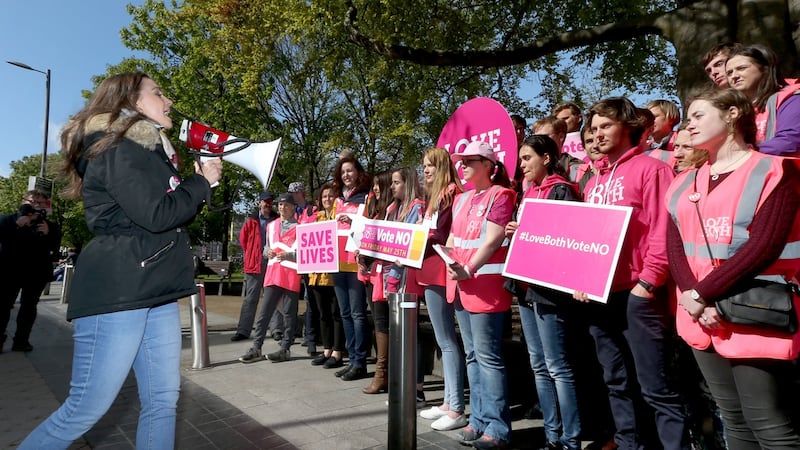
A Together for Yes team is also here, and did a street canvass before lunch but their bright blue vests and pamphlets have long since disappeared. Now it is serene, a little sleepy. This is rural Kilkenny.
Hennessy’s views on the Referendum to Repeal the Eighth Amendment of the Constitution are not quite what one expects of a man his age in a small Irish town.
Initially, he conforms to stereotype.
“I will vote No,” he declares.
And then there’s a pause, a momentary look of confusion, and then an emphatic correction.
“Sorry, I will vote Yes. Yes. Women should have a choice. It’s not as draconian as some No people are making it out to be of killing babies. I do not believe it. I don’t think it’s true. It’s about choice,” he says.
And what about the 1983 referendum? “It was a different Ireland but the circumstances were the same. I’m voting the same now as I voted then.”
A few evenings earlier in Cabra, an inner suburb in Dublin central, a young woman in her mid-20s, Linsey Keane, comes to the door to talk to Aoife, a Yes canvasser of around her own age.
Keane, dressed casually in jeans and top, with her hair tied back, fits the profile of a Yes voter, in a liberal capital heavily skewed towards pro-choice. But in a long discussion with Aoife, she articulates a view that veers strongly towards a No argument.
“I would vote yes for rape and medical conditions,” she says, “but what concerns me is that so many people would take advantage of it.”
Keane says she knows women who have had abortions “for no reason”. To her it was “killing innocent poor babies”.
“I would not do anything like that. I have two and would have a thousand babies if I could,” she half-jokes.
These are just two encounters from many this reporter has witnessed during two months following the campaign on the ground all over Ireland. Locations have included Cork, Offaly, Louth, Longford, numerous areas of Dublin, Kerry, Kildare, Galway, Carlow, Kilkenny, Westmeath, Tipperary and Wicklow.
Confounding expectations
These two moments illustrate the extent to which this upcoming referendum confounds expectations and undermines broad assumptions about old, young, rich and poor, urban and rural voters.
There was a time when you could have drawn those divides on a map. But it’s not so clear-cut any more. For every strong trend, there are outliers and exceptions.
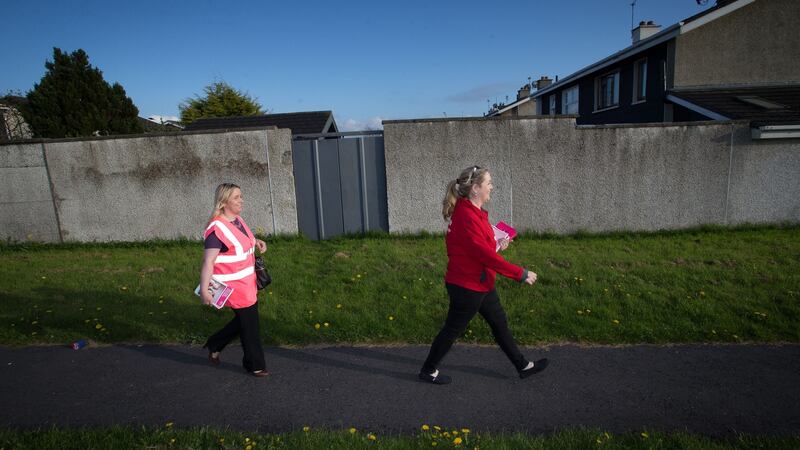
And with less than a week to go to polling day next Friday, for good reason, few feel emboldened enough to call the outcome with any confidence.
There are times in the run-up to a vote when people sense change is imminent, and you can feel the momentum towards one side or one social movement.
It happened in 2011 when Fianna Fáil, the party that had dominated the Irish State for almost a century, was nearly wiped out in a general election. The same sense characterised the run-up to the same-sex marriage referendum in 2015.
In 2011, this reporter witnessed a woman pushing a buggy snarl at outgoing minister Mary Hanafin in Dún Laoghaire: “Fianna Fáil? I would rather stick pins in my eyes. You are a load of gangsters.”
Four years later, during the same-sex marriage referendum a church-going grandmother in her 80s in south Tipperary apologised for having no brown bread baked when the canvasser opposing the change arrived. But when asked for her support, she said No, citing her respect for a gay couple who lived down the road.
Small margin
With this referendum, there have been no such epiphanies. The outcome is more likely to be ground out, painfully, and probably by a small margin.
An Irish Times Ipsos MRBI poll this week showed a 12 point gap (44 points for Yes, 32 points for No) but the gap is narrowing. A quarter of voters were unsure, refused to answer or did not intend to vote. Yes is ahead but support for Repeal is slowing.
While both sides’ referendum campaigns have superficial similarities to the 2015 same-sex marriage referendum, there are big differences. One is that the No campaign is big and very organised (some groups have been continuously campaigning for more than three years).
“I don’t think it’s a similar referendum to marriage equality,” says Orla O’Connor, a co-director of Together for Yes. “I think this is a much more similar referendum to the divorce referendum.”
The 1995 divorce referendum was passed by a sliver (50.3 per cent to 49.7 per cent). What jumps out from the results is the divided country it unveiled. Every constituency in Dublin and most surrounding counties supported it. Everywhere else, with one or two exceptions, voted No. Liberal Dún Laoghaire backed it 65-35 per cent; conservative east Galway opposed it 35-65.
Urban divide
That rural urban divide is no longer so stark. Trish Carroll moved from Dublin to Castlecomer 25 years ago. She considered keeping the job she had in Dublin but the road network then made it impossible. Now motorways mean Dublin is little over an hour away.
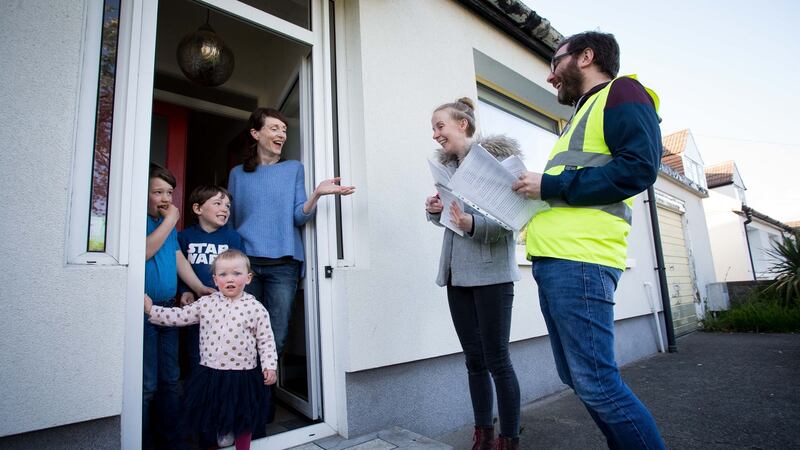
Better access has brought about the urbanisation of rural Ireland. In Castlecomer, and in the beautiful Co Carlow village of Leighlinbridge, there are sizeable middle-class estates with big houses and big cars, that would not look out of place in Raheny, Ballinteer or Lucan in Dublin. Here, people have a more suburban metropolitan disposition when it comes to moral issues.
On one day this week, The Irish Times joins Yes and No canvasses in Castlecomer and Leighlinbridge. While Nos appear to be a nose in front in these areas, there is a high volume of Yeses. Phil Littleton, convenor of the large Carlow Save the Eighth canvass visiting Leighlinbridge, says the county will vote strongly No but there will be pockets where it is more even.
John McGuirk, spokesman for Save the Eighth, has said that No might not be so dominant in rural Ireland any more but, against that, might do better in Dublin than many expect – particularly in long-established neighbourhoods with older demographics.
While Yes is clearly dominant in the capital, on canvasses we have joined in Perrystown, Kimmage, Clondalkin, older parts of Cabra (and parts of Galway and Cork) , there are significant numbers of Nos.
What the canvassers say
If you follow any of the campaigns for a while, it becomes easy to predict what they will say. Yes canvassers tend to focus on the fact that the Eighth Amendment does nothing for the extreme cases such as fatal foetal abnormalities, incest and rape. They say that women’s lives are being put at real risk. They also emphasise ideas such as choice and compassion.
For No campaigners the major focus has been on abortion without restriction until 12 weeks, and abortion up to six months on what campaigners say are “vague mental grounds”. Another major argument surrounds the trustworthiness of politicians, a line that has had purchase with people.
In Leighlinbridge, a woman speaking to canvassers seems chiefly swayed by this: “I would not trust politicians with putting a stamp on an envelope. They bankrupted the country once already.”
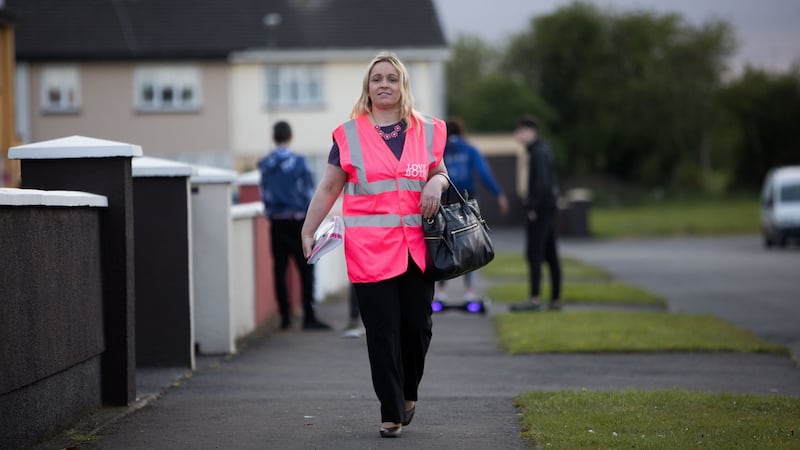
With many undecided voters, there are unpalatable aspects to both sides’ campaigns. No campaigners, when asked about rape for example, tend to say the victim aborting the baby is a second violation or assault.
This response does not go down well with most householders. “If my daughter was raped, I would be on the plane with her in the morning,” says a mother of adult children in Castleknock, Dublin.
For the Yes side, the big problem is the idea of unrestricted abortion up to 12 weeks. A Cork No campaigner Becky Kealy is convinced it’s a game changer: “I think the whole 12 weeks thing, they shot themselves in the foot with that. It’s too extreme for the normal Irish person.
“I fully believe we are going to win. I did not believe it last summer but I am totally the opposite now.”
In Castlecomer, experienced Yes campaigners Katherine Nolan and Enya Kennedy use the divorce referendum to dismiss the “floodgate” argument, and talk about abortion already existing in Ireland by proxy.
"Abortion is happening anyway. We need to have it in our own country and not force people to travel," says Nolan.
Personal stories
One of the most standout campaigning tools in the 2015 referendum was use of personal narrative by gay couples to remind others they were people like them. It’s been harder to do that now because abortion is often a hidden topic.
“A lot of people are affected by this issue,” says Sinn Féin TD Kathleen Funchion, “but might not be able to say so publicly.”
Over the past 10 days, there is a sense of a minor change on doorsteps. There have been more stories shared from householders about people they know who have had abortions or crisis pregnancies. A few talk of having to carry a fatal-abnormality pregnancy through to birth. Others speak of acquaintances who have had abortions and either regretted them or said they were their choice.
Some on the No side talk of meeting rape victims who chose to keep a child, or of “miracle babies” who were diagnosed with fatal foetal abnormalities yet lived.
There is a sense of views hardening. In Kilkenny and Carlow there was a lot of talk about the debate on Monday's Claire Byrne Live show, with No people lauding Maria Steen, and the other side complaining about audience jeering.
One noticeable new trend on the doorsteps in the past week has been the number of people saying they would never have an abortion themselves but would never prevent somebody else making that choice.
In Castlecomer, Yes voter Kate Fleming, who is expecting her third child, says: “No matter what you say you cannot stand in anybody else’s shoes. Every women should have their own choice.”
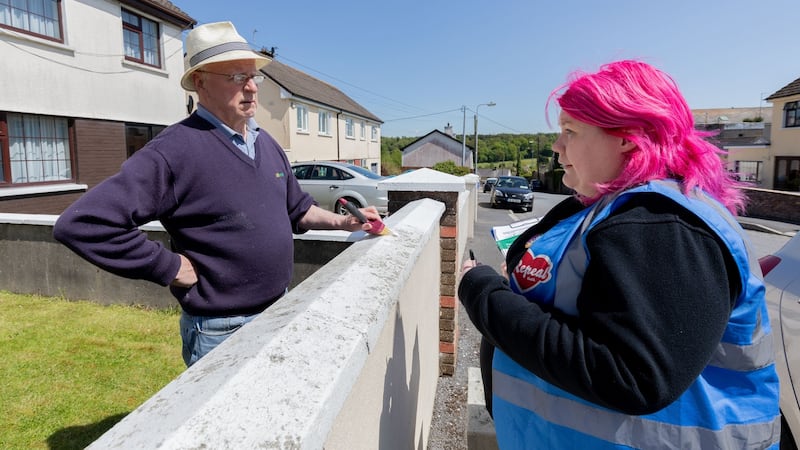
The outcome
So what will the outcome be? It is impossible to judge from the mood on the doorsteps alone.
In 1983, the hugely divisive referendum to insert the Eighth Amendment in the Constitution produced an electoral turnout of just 53 per cent. The turnout in other abortion-related votes has been low too. It was 42 per cent for the abortion referendum in 2002. In 1992, it was 68 per cent but there was a general election on that day.
Few expect the turnout to match the 60 per cent of the electorate who voted in the same sex marriage referendum. Will young people turn out in large numbers to vote? Will men? And which side will that large chunk of current waverers take?
It still looks like a Yes but there is much uncertainty.
Back in Dublin, a former senior government minister and committed Yes voter says he believes it is “going down”. Minutes later, a Fianna Fáil TD, a No voter, says it will be comfortably passed.
“I do think that it will be tight, we have to be honest about that,” says Funchion. “I do think the Yes side will prevail.”
That uncertainty carries into the final week. The indomitable No campaigner, Phil Littleton, gives an honest assessment: “I will not be surprised whichever way it goes. It’s going to be close. I know that is hedging my bets but it’s very hard to call it.”









